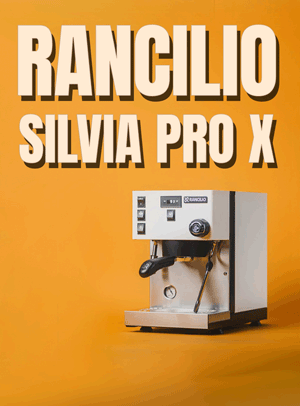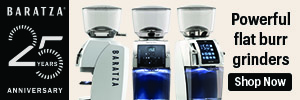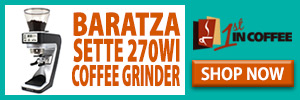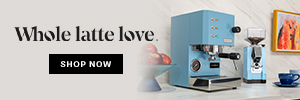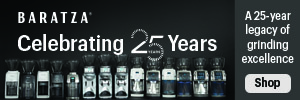We’re speaking to a fellow who, if consumers know him, I’m betting they are going to know him through a book that was published called “Uncommon Grounds” by Mark Pendergast. It’s a New York Times bestseller and it’s about the coffee history in the United States over the last couple of hundred years and by reading that book, I get the sense that both George Howell, who is our guest today, and Alfred Peet are the two fathers of specialty coffee in the United States today.
George was certainly someone made out to be someone who had a major impact and influence on specialty coffee on the East Coast and I think it is time for our listeners to find out more about him.
CG: Well I’m going to get right into this interview and I think the first question I want to ask you is how did you get your start in coffee and specifically, when did you get your start in coffee?
GH: That was back around 1968 when I had moved from East Coast to the West Coast. I was living in Berkley and I was driving in 1968 past the original Peet’s on what is it, Cedar Vine I think, and I saw all these people standing outside. It looked liked a party around two o’clock in the afternoon, holding these very interesting, at that time porcelain cups, paper cups didn’t exist at that time, these long stemmed cups.
So I parked my car, got out, walked into this place and was offered a cup of coffee. It was a bit on the dark roast side, I didn’t know and I wouldn’t describe it back than that way but in any case I was fascinated. The inside of the Peet’s store was amazing. It was like walking into some ancient chemical lab from a 14th century or something with a smell of coffee just permeating the whole store.
Well I became a fan. I quickly migrated from Peet’s to another company that was around at the time in the same area that was in a lighter roast and I just had a natural preference for something lighter roasted than that. I was hooked on coffee since that time essentially since I was a consumer.
CG: So before that you were just like the typical I guess American coffee drinker having instant and things like and this was kind of an explosion of this new sense of specialty coffee for you.
GH: That’s exactly right. Just looking at the coffee makers themselves and all the choices available was exciting.
CG:: So after the Peet’s experience what was your next sort of phase in getting into coffee business.
GH: In 1974 we have decided to leave the West Coast, I already had two kids, and move east to Boston. We did that, I drove across country. I took with me whole bean coffee, a grinder and we stopped at the various Howard Johnson’s that were on the interstates on our way and I would go into men’s room, grind the coffee there, leaving it smelling a whole lot better than when I walked in, and than I would take out my French press on the counter, ask for hot water for 35 cents and make my French press at the Howard Johnson’s counter. And within minutes I would always had several people around me wondering what that was, and this is before I even had any clue that I would get into a coffee business.
CG: Wow, for 1974 that was pretty hardcore.
GH: Yes it was! So the coffee (in Boston) was infernal. You could find it tea shops and alike in these plastic bins but when your brought them home and grind it was like a basic sawdust, with no flavor at all, just totally stale.
CG: So even than you recognized the difference between the coffee you were using and just the coffee you could get anywhere else.
GH: Oh you know I was used to fresh coffee. What they were doing than was a big revolution on West Coast was that it was freshly roasted. That made a huge difference. Everything here on the East Coast was so stale to be unpalatable. So with two kids and number three on the way, and my wife Laurie we I decided that we would open up our own company.
CG: And when did that happen?
GH: Well we made this decision after about four months in Boston so that was in the beginning of the fall of 1974 and we came up with the name Coffee Connection, I mean Laurie did that actually, and we opened our first store in Harvard Square in April of 1975.
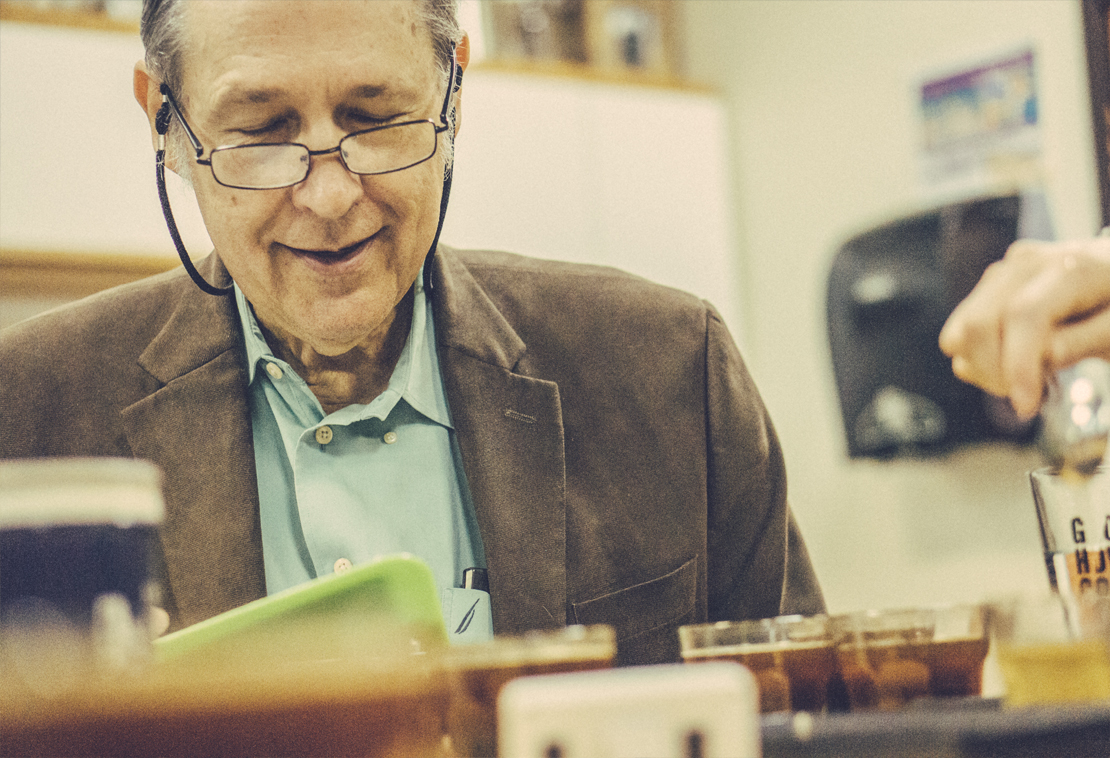
CG: In opening that store what was your business plan, what was the concept, what facilities did you have with the company?
GH: What business plan? (Laughter). Those were the early days. It’s interesting. Yes, before we opened we thought it was a just a matter of staleness, so we thought we would find a coffee roaster around here who could roast it for us and that would solve our problems. And I was very lucky. I had this salesman come up from a coffee roasting company that was claiming to be gourmet and it actually became a big name: I won’t name it.
The guy said here it is, Columbian green coffee, essential American and a Brazil. And you want Kenya AA, I will mix it this way, you want Jamaican Blue Mountain, I will mix another way, because nobody knows the difference and frankly there are very few differences. And so that is when we realized we had a roast. We got an old used Probat Roaster, thanks to Erna Knutsen.
CG: Oh, I’ve met Erna, she is still kicking.
GH: Erna is one of the absolute key people in the entire specialty coffee movement.
CG: I agree and she is a lot faster on her feet than I am even today.
GH: In fact even at the end after 20 years in business at least 50% of all the coffee that my company Coffee Connection bought was from her and that meant having to transport it over the land from San Francisco to Boston.
CG: Was this a roastery or a coffee house or both?
GH: It was a coffee house. We set up a roasting plant few miles away where we could grow essentially. Harvard Square was by far the most dynamic spot in the greater Boston area. Being around Harvard there was a lot of college students.
CG: Right, and as far as learning the art of roasting were you self-taught?
GH: Completely, we had no mentors whatsoever. I nearly blew my head off the first time I roasted.
CG: What about learning how to things like cupping?
GH: Cupping? It’s interesting, I gotta tell you what I was in the business right up until 1988 before I learned really how to cup. Until than it was touch and go. And I would frankly say I’m sure there were others who learned how to cup sooner than that but I think this is an indication of that fact that we are mostly all of us in the specialty are self taught, and that came with a lot of pluses and a lot of minuses.
CG: Well there are a lot of hardships but I also think that self-taught is sometimes the best way to go, because you learn by your mistakes I think a lot better than sometimes by your successes.
GH: Absolutely, well it adds a truly creative element but in that creativity the danger always is lack of discipline and making assumptions, which than become hardened into supposed facts, that are incorrect.
CG: Again back to Coffee Connection, the first store was opened in 1974-75. When did you know that you really were onto something in the Boston area? When did you know that this was gonna be something big.
GH: Within the first month we were overrun with customers. I will always remember within the first month or so it was like a stock exchange on a record breaking day and we had customers who would jump behind the counter, wash our dishes for us and refuse the payment.
CG: Oh my gosh!
GH: I don’t think you see this anymore.
CG: That’s a very rare thing for sure. When did you start thinking about expansion and when did this happen?
GH: I was always open to that. It wasn’t a plan so much, it was an opportunistic growth. If a great opportunity presented itself, I was open to that. So we grew one store maybe every two years.
CG: How was the Boston coffee scene by the late 70’s?
GH: I am maybe wrong but I feel that until the mid 80’s we were the only game in town and there was nothing else.
CG: Did you notice an influence outside of Boston area? Did you notice that Coffee Connection was kind of steering the direction of quality coffee in the Boston area and in the North East?
GH: Yeah, I would say we were a big factor in the North East, but really you didn’t see other coffee roasters happening until the later part of the 1980’s with the rise of Starbucks phenomenon, that’s when it all started happening. I would say that the only other player around our area at all was Green Mountain out of Vermont and we really had quite separate markets.
CG: Even than the Green Mountain’s market was different than yours?
GH: Yes, they were never in Boston up until much later, the late 80’s at the earliest I would say. They did more wholesale with the few retail outlets spread all over New England but again nowhere near Boston. So we never really fought it out or competed on any level that I can remember.
CG: I have another questions for you, specifically regarding this Boston coffee scene. One of my favorite things to talk about when it comes to coffee and cafes is the experience, the romance, the sort of culture that surrounds them. Do you have any favorite stories from those times, from 70’s or 80’s about your cafe or about what your clientele was like. You just told us one about the jumping over the counter.
GH: That’s my favorite.
CG: Is there any others that come to mind?
GH: From the top of my head that one repeats itself. The other one simply is, we were in a really small mall where we shared space with an ice cream shop and a sandwich shop, so on, it was really Wild West in there but that is not a coffee story.
CG: But the Boston coffee scene really evolved because of Coffee Connection.
GH: Well yes. We did several things that were innovative. I mean we certainly took Peet’s as a model, which everyone was doing of course. Selling the coffee beans was the critical thing back than in the beginning. Serving the beverage was really proving how good our coffee was by letting you consume it – right there.
We had no clue in the beginning that it would be the beverages really that would become the “tiger” in sales and profitability. One thing we did was to add French press, so if I had 12 coffees for sale I could do 12 different coffees with the French press on the spot. So that was one innovation.
I don’t know of any other coffee houses that were doing that at the time, there may have been. And the second one that we were doing was putting roast date. We put roast dates on every one of our bins and on the bag that you purchased as well.
CG: Even to this date that is a thing that the Roaster’s Guild is fighting for, trying to get their members to do and so many small roasteries, even high quality ones, either don’t do it or are told by other customers not to do it because of product on shelf.
GH: It is very difficult to maintain a regime like that and it has drawbacks. I would not be in the business if I didn’t feel I had a lot more to learn, that’s part of the excitement. And I’m learning a lot more about freshness until this date. Up until two years ago I wouldn’t have said this but now I would – I wouldn’t sell coffee in bins anymore today. Coffee that’s in a one way valve if it’s relatively recent, is fresher than anything in my mind in an open bin. The bin is totally open to oxygen. If you have a one way valve bag that is airtight and working well you can go few weeks and really maintain the freshness. I don’t think that’s where the frontier is anymore. I do believe that they should have the roast date, which we do have on our bags.
CG: Actually I want to step back and talk about equipment in cafes. I imagine up until the early mid 80’s you were doing drip coffee and press pot but did you introduce espresso machines into your cafes and when did it happen if you did?
GH: Yeah, we did from day one, but I do confess that I didn’t zero on that in until the mid 80’s. It was the whole Starbucks phenomenon and the Seattle phenomenon I should say that woke me up to espresso as an absolutely key player in specialty key.
CG: But actually this is interesting. Back in 1975 you had an espresso machine in your shop.
GH: Oh yeah, right away.
CG: Do you remember what model it was?
GH: The first one was home machine (laughs).
CG: Oh really?
GH: Oh yeah, it was made in Switzerland, I can’t quite remember the name right now.
CG: And what was the first commercial machine installed in your cafe?
GH: It’s a well known brand, you don’t see it much in States anymore. First I had a two group and than I went all the way to a single six group copper clad machine Bazzera.
CG: Six group Bazzera machine, wow.
GH: Yes, with the handles that you brought down, it was gorgeous.
CG: So it was a piston driven machine?
GH: That’s right!
CG: Wow! That’s amazing! So were you behind the bar yourself anytime back in the 70’s or 80’s?
GH: I did retail. I never had to be behind the beverage bar and deal with things that quickly.
CG: Ok, but Coffee Connection was pumping out cappuccinos, americanos and espresso shots?
GH: Americanos didn’t come until much much later. We did espresso and cappuccino. That was pretty much the beverages in those days. It wasn’t until the late 80’s when you started getting the lattes.
CG: Actually you mentioned the Starbucks buyout. That’s actually what I want to cover next. You know the Internet is just a foundry of rumors and all sorts of things and there has been this almost legend that has been growing up around the whole Starbucks buying out Coffee Connection. What I want to do right now is basically get straight from the horse’s mouth how they approached you, what was your final decision maker to sell the cafe, what agreements there were, how long you were out of the coffee business because of that. The whole shooting match. Maybe you could give us the chronology of what happened.
GH: Well it is lot less dramatic than people imagine. We really started when Howard Schultz took over, I think in 1987, and it became clear within that first year that Starbucks now had a national plan, not a local plan and I became very aware of that right away.
I do remember visiting sometime in 88-89 and actually knocking on his door and asking are you planning to come to Boston, because I was worried. At the time he certainly didn’t say he was but he talked about that maybe there was some synergy or whatever and that was sort of the evidence. And there were times where Starbucks certainly probed and was interested in potentially buying the Coffee Connection.
I saw them pretty much as competition but I never believed in shutting doors to your competition. I always believe in talking as much as possible and dancing with them. You know your competition better that way. There were other times where it came up, always from them. It never amounted to anything, it never went anywhere. Starbucks made it clear every time that they were trying to turn Coffee Connection into Starbucks right away. So I always wanted the Coffee Connection to remain and wanted it as a legacy if you will and wanted to maintain its roast style and quality.
CG: And of top of that you had hundreds or that is thousands or loyal customers.
GH: Precisely. The next step than as we went into the 90’s and Starbucks emerged out of Chicago very successfully and now was entering San Francisco and elsewhere, their entry into Boston was becoming ever more up. And as it happened I decided that I really had to meet the challenge head on so we went after the venture capital in 1993. With venture capital we doubled our size in one year.
We went from 12 to 24 locations, with number 25 on the way. We spread outside of Boston all the way to New Jersey. So we were really going at that point and than Starbucks made another overture, if you will. This time through the venture capitalist and at that point I left the venture capitalist really (garbled) and I negotiated out to see if there was a deal.
That was of interest more and more to me. First of all because Starbucks looked a lot more serious this time, were offering substantially a lot more and also for the first time they were offering to retain the name Coffee Connection and to keep the effort in keeping our name and legacy.
CG: So the deal was done and did they state that there was going to be a good effort to keep Coffee Connection name.
GH: Yeah, and I have to say before you go further that my interest in selling was growing because really this was becoming the business of Coffee Connection, was going more and more towards beverage service, lattes, all of that and going for the money and growth all of this. I was becoming more deeply interested in coffee growing, coffee like a wine, coffee the product from farm to consumer. And I couldn’t do that as it seemed to me that I was going to be running into a lot of restraints. The final thing was the whole dark roast scenario really was growing and I’m sure you heard it in politics, when you repeat something enough, it becomes truth.
Often regardless of whether it is or it isn’t. This repetition of dark roast being gourmet or quality and light roast being commercial really was taking its toll and I felt that as well.
CG: So the deal was done and you had to step away from coffee for a while. My understanding is that you had a “no compete” no clause.
GH: Yes, for the first two years I was a consultant and there was a multi-year no compete, which is typical in any sale that happens and really that was OK because I wasn’t interested in opening up another shop. Quite the contrary, my interest was going to farms and working with farmers maybe as a bridge between them and the market.
CG: Did you ever get any feedback from the customers about Coffee Connection coffee, either positive or negative, after Starbucks took over. I know there was so much loyalty in the Boston area towards your company. Did you ever face any kind of negative feedback on that or anything?
GH: Well I don’t think that I was very easy to find for anybody, but certainly when I returned I had gotten a lot of feedback from people and a lot of them missed the lighter roast coffee, and of course the quality we offered.
CG: What that shows too is that in that 10-15 years it had such a huge impact on Bostonians that they are always are going to remember it.
GH: Yes. Certainly the people that were around do remember it and it lives in a memory of a lot of people.
CG: So obviously you took some time off after the Starbucks deal but what were you doing in the mid late 90’s because it is almost like you disappeared.
GH: Well, I was certainly involved more with the Specialty Coffee Association of America. I was doing their conventions; I did a lot of teaching, seminars, cuppings and that kind of thing.
As far the International Relations Committee, the IRC and SCAA as well, and that led me to some consulting, especially with the United Nations, in a joint project with the ICL, the International Coffee Organization based out of London. So I started working as the quality consultant to what was called the Gourmet Project, run by the United Nations and this was all out of Brazil and that was starting in 1997.
I visited Brazil over and over again for 2 to 3 week periods, 5 to 6 times a year visiting the farmers throughout the Brazilian area and the project really was to create a blue print for farmers around the world to produce higher quality and sell that higher quality for higher prices in the American specialty market and secondarily elsewhere, such as Italy and Japan.
CG: George, I’m going to wrap up this interview because we are getting close to end of our scheduled time but actually I had one more question for you and that’s actually on your current venture, Terroir Coffee. First of all, tell me how it is pronounced.
GH: “Terhar” – it’s a French name.
CG: So this is now your new roasting and green buying company, is that correct?
GH: Yes, that’s right. I picked the name because to me when you’re really going after the highest quality coffees you’re not longer going for blends. Your dealing with Single Origin, Single Estate coffees, whether it would be co-operatives or farms. Its really all about place and craftsmanship producing the highest quality. So that’s what Terroir says, it’s a term used in wine.
When wine is made really well it will represent the place it comes from perfectly and uniquely so and it’s the same way with coffee.
CG: So is this a wholesale company or are you doing retail, could you tell us more about it.
GH: It’s both wholesale and retail. We do sell it to cafes and restaurants, only just starting in that area. And of course mail order, which is my key love, because that is where I get to deal directly with the customers and sell them coffees really unlike anyone else’s coffee, by a long shot.
CG: Do you have a website?
GH: Yes, its www.terroircoffee.com.
CG: And George for our next interview we are going to be talking even more about the fact that you already have a cache that would be impressive to our listeners, and that is the fact that you supplied the winning espresso blend, actually the espresso, I don’t want to use the term blend, to the World Champion.
GH: Yes!
CG: So I’m looking forward to our next talk George.
GH: Mark, I am too. Thank you/










